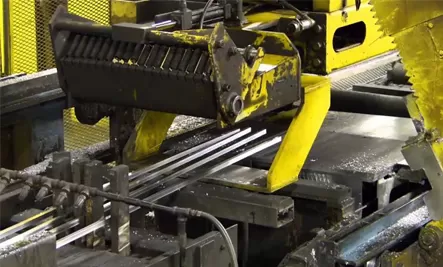Everything you need to know about aluminum extrusion
Mar. 06, 2024
Aluminum extrusion is a versatile manufacturing process used to create complex shapes and profiles with aluminum alloys. This process involves forcing aluminum billets or logs through a die to produce long, uniform cross-sections. Here's everything you need to know about aluminum extrusion:
Process Overview
Aluminum extrusion begins with the heating of aluminum billets to a specific temperature. The softened billets are then pushed through a shaped opening in a die using a hydraulic or mechanical press. As the aluminum passes through the die, it takes on the shape of the opening, forming a continuous profile of uniform cross-section. The extruded aluminum is then cooled, stretched, and cut to the desired length.
Benefits of Aluminum Extrusion
1. Versatility: Aluminum extrusion can create a wide range of complex shapes and profiles, making it suitable for various applications across industries such as construction, automotive, aerospace, and electronics.
2. Lightweight: Aluminum is inherently lightweight, making extruded aluminum profiles ideal for applications where weight savings are essential, such as in transportation and aerospace industries.
3. Strength-to-Weight Ratio: Despite its lightweight nature, aluminum extrusions offer excellent strength and structural integrity, providing durability and reliability in demanding environments.
4. Corrosion Resistance: Aluminum naturally forms a protective oxide layer, offering inherent resistance to corrosion and rust. This makes extruded aluminum profiles suitable for outdoor and marine applications.

5. Design Flexibility: Aluminum extrusion service allows for precise control over dimensions, tolerances, and surface finishes, enabling customization to meet specific design requirements and aesthetic preferences.
Applications of Aluminum Extrusion
Aluminum extrusions find widespread use in various industries and applications, including:
Building and construction: Extruded aluminum profiles are used in window frames, curtain walls, doors, and structural components due to their lightweight, strength, and corrosion resistance.
Automotive: Aluminum extrusions are employed in automotive body structures, heat exchangers, chassis components, and trim parts to reduce weight and improve fuel efficiency.
Electronics: Extruded aluminum heatsinks and enclosures are utilized for thermal management and protection of electronic components in computers, LED lighting, and consumer electronics.
Aerospace: Extruded aluminum profiles are used in aircraft structures, fuselage frames, and interior components for their lightweight, strength, and resistance to fatigue.
Conclusion
Aluminum extrusion is a versatile manufacturing process offering numerous benefits, including versatility, lightweight, strength, corrosion resistance, and design flexibility. With a wide range of applications across industries, extruded aluminum profiles play a critical role in modern manufacturing, construction, transportation, and consumer products. Understanding the fundamentals of aluminum extrusion enables designers, engineers, and manufacturers to leverage its capabilities and create innovative solutions for diverse needs and requirements.Learn about Prototype Plastic Extrusions
251
0
0
Next: None


Comments
All Comments (0)